Of course, you know that your daisies and peonies won’t bloom forever. That said, you can look on the bright side by considering go-to fall flowers like pansies, mums, Japanese anemones—the list goes on. With eye-catching colors ranging from reds to blues, there’s no shortage of flowers to choose from to arrange the perfect autumn garden. But before you start shopping, be sure to consult with your local plant supplier or nursery to pinpoint the best time to plant each species, which tends to be late spring or early summer. You can also check with a gardening expert in your area to determine the best annuals and perennials that will flower through September and October. Additionally, it’s worth visiting the United States Department of Agriculture’s Plant Hardiness Zone Map before ordering any plants online. You’ll discover a helpful guide, highlighting different climates in the U.S. and the most suitable varieties for each location. Once you’ve done your research, take your pick of any of these autumn-blooming beauties to enhance your garden.
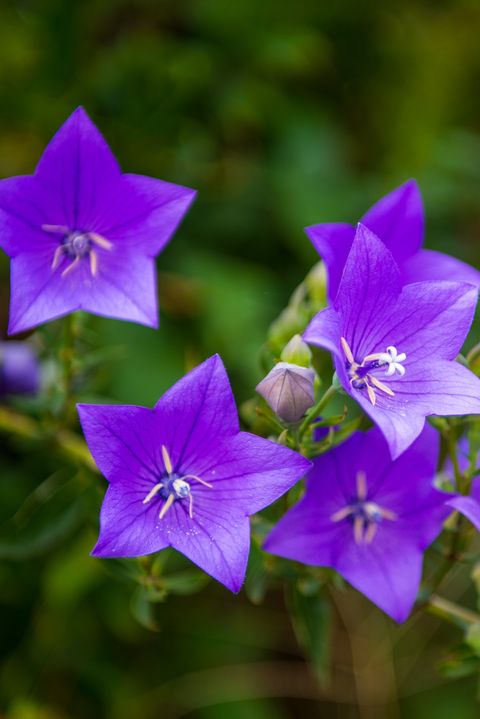
As its name suggests, these gorgeous flowers—which can be found in shades of blue, white, and pink—resemble hot-air balloons before they blossom. While they do well with full sun, they can also thrive in partial shade.
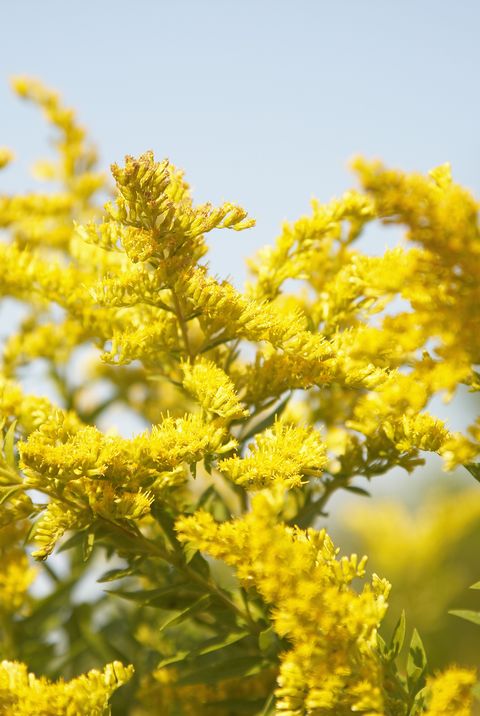
Goldenrod is a striking weed-like plant that favors full sun and soil that’s well drained. But beware if you suffer from allergies, as their pollen can cause a runny nose and itchy eyes.
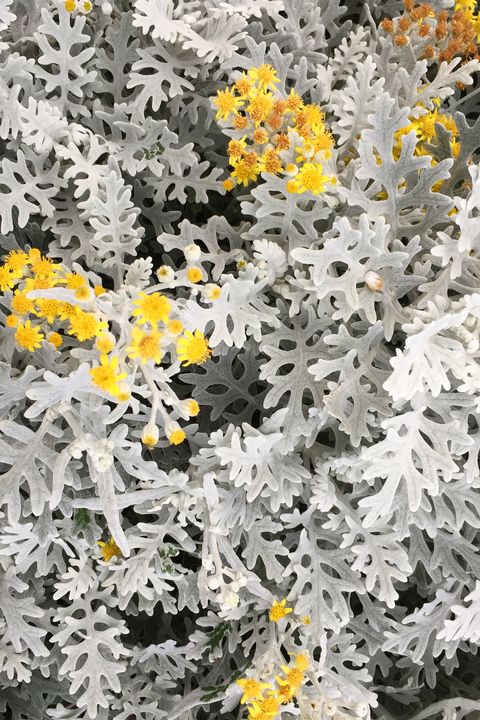
This fluffy silver plant, which is also known as Jacobaea Maritima, would make for an unexpected addition to your garden. Give it full sun and well-drained to keep it healthy.
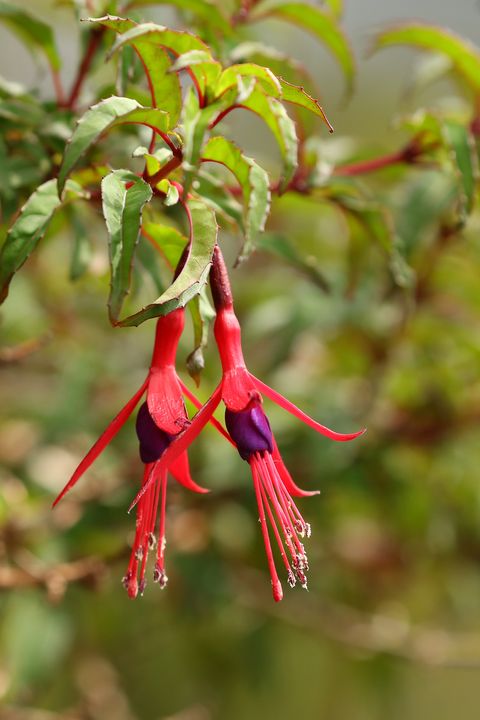
If your garden needs a burst of color, look no further than hardy fuchsia, which is also referred to as fuchsia magellanica. Keep in mind that the right soil—not too dry, moist, or hot—is key for this type of flower.
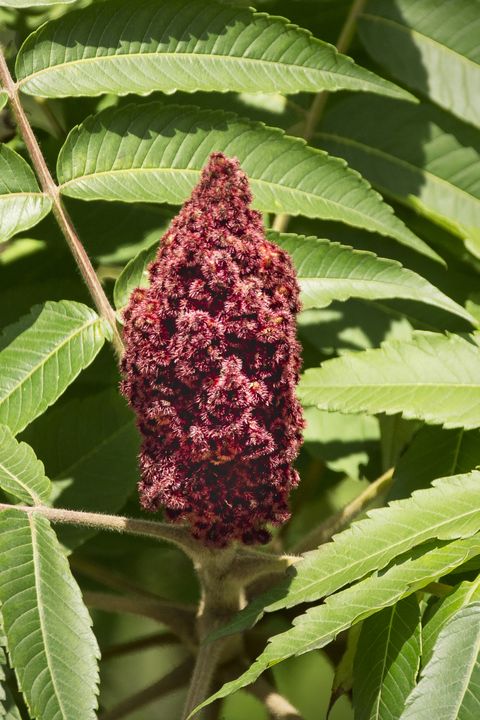
With well-drained soil, these hardy red flowers can grow up to 30 feet tall. They’re available in a slew of varieties, so you’re sure to find the perfect type to add visual interest to your garden.

Amaranthus produces gorgeous tassel-like flowers each fall that look great in arrangements — both fresh-cut and dried. Grow this annual in full sun or part shade, advises the Missouri Botanical Garden.
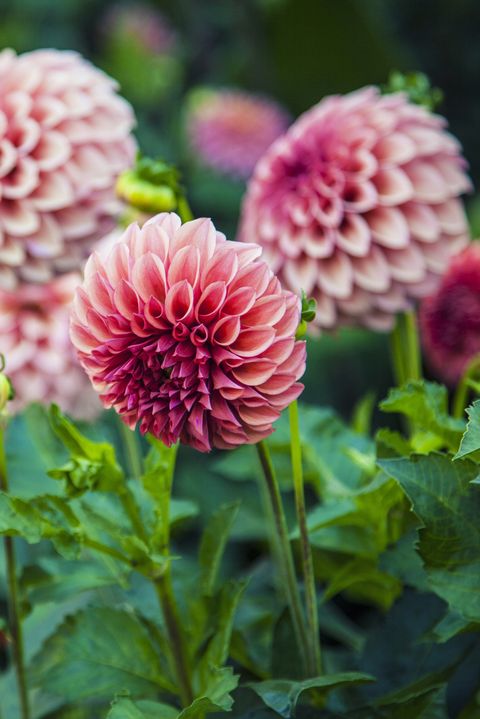
Certain varieties will keep on bloomin’ from mid-summer into fall. Pick orange- and red-tinted varieties for autumn bouquets, but dahlias come in just about every color under the sun.
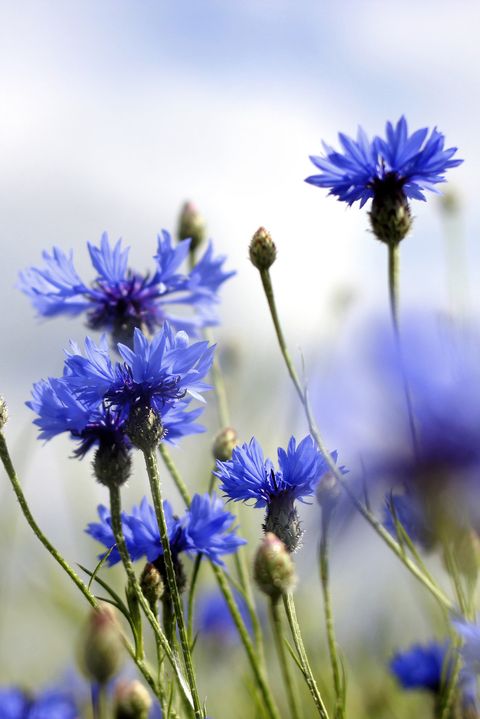
You’ll love these bright-blue beauties as much as the birds and butterflies do. For continued flowering, deadhead spent blooms.
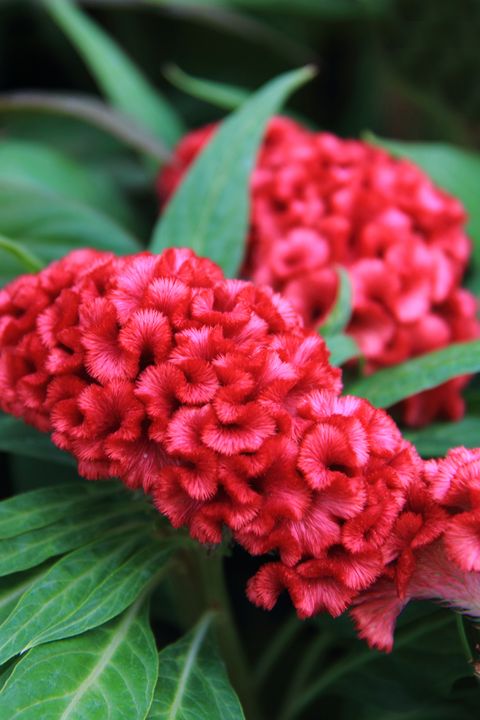
Also known as cockscomb, Celosia cristata produces crested flowerheads several inches wide well into autumn. Its relative Celosia plumosa, on the other hand, produces feathery-like plumes — another fall favorite.
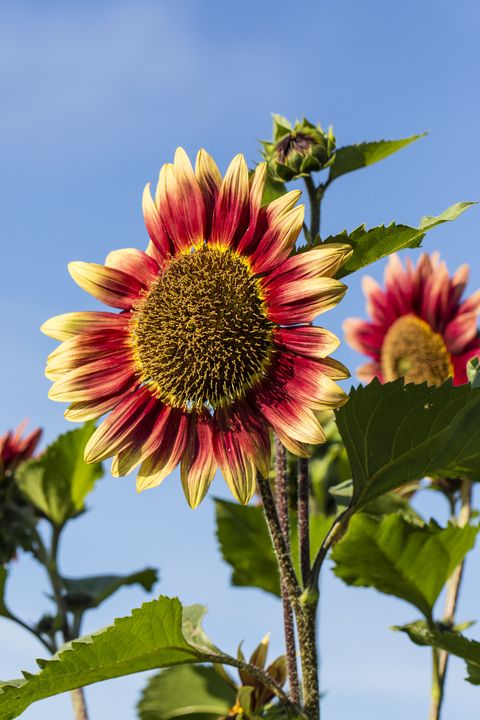
They may peak mid-summer, but most sunflowers will keep shooting up, up, up even as the weather cools. Harvest when the seeds start to turn brown, or the backs of the seed heads turn yellow. You’ll have to beat the birds to them, however.
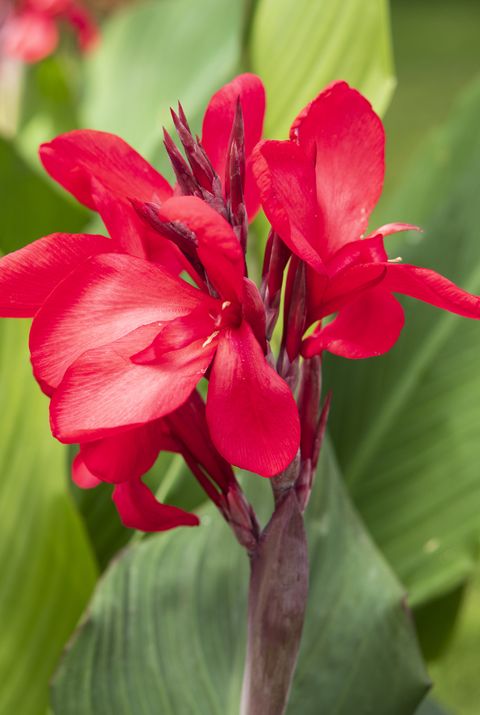
The tropical flowers and lush leaves reach up to 8 feet high and can dazzle from May until October, depending on the type and place. Plant dwarf varieties in containers and bring them inside over the winter to enjoy them year-round.
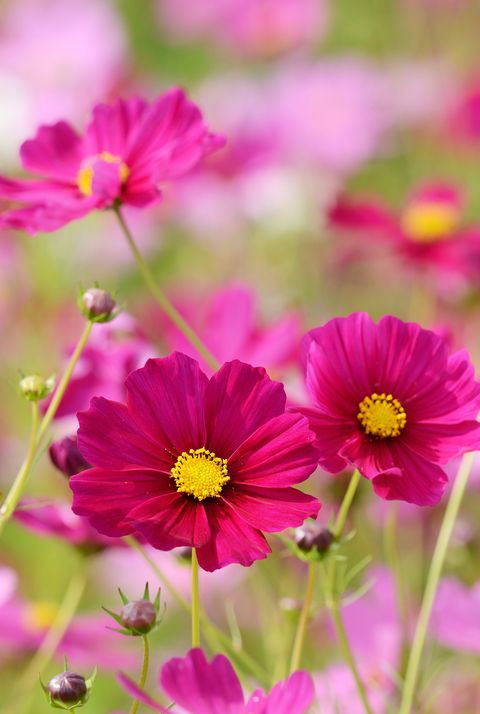
Your kitchen will never go without flowers if you plant a bed of cosmos. They make for great bouquets from spring until first frost. Bonus: Finished blooms can self-seed in your garden for even more stems.
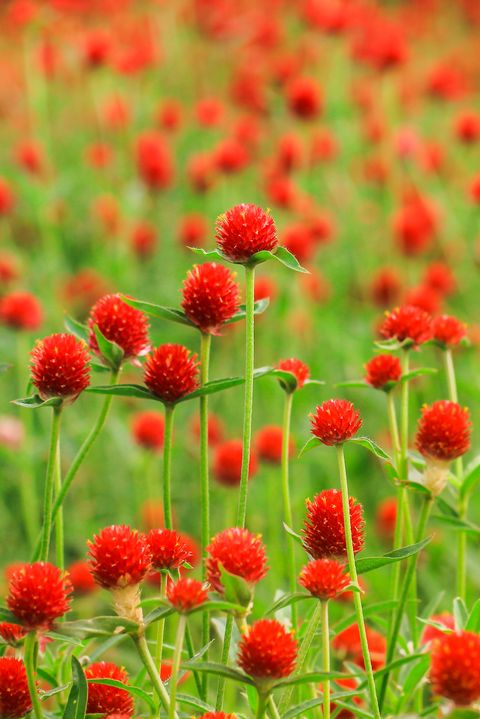
If you struggle with dry or clay soil, give this drought-resistant species a try. Gomphrena globosa generally grows about a foot tall and lasts until frost sets in.
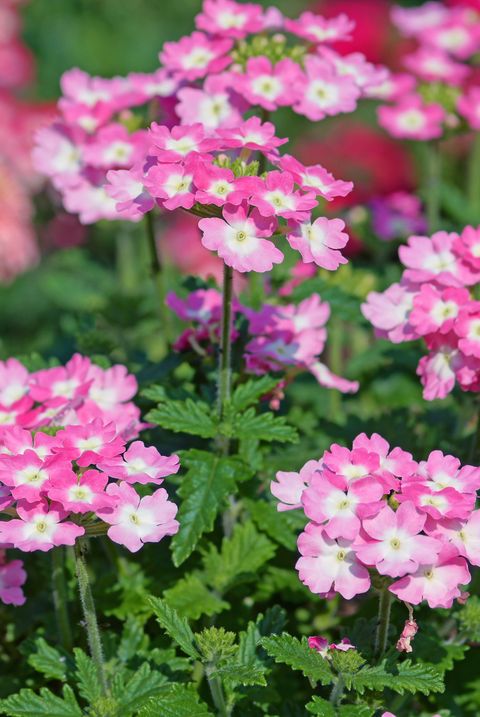
These tiny beauties flower profusely until first frost, brightening beds, borders, and hanging baskets even in part shade. They’ll even tolerate the hot, dry summer days in the South leading up to a cooler fall.
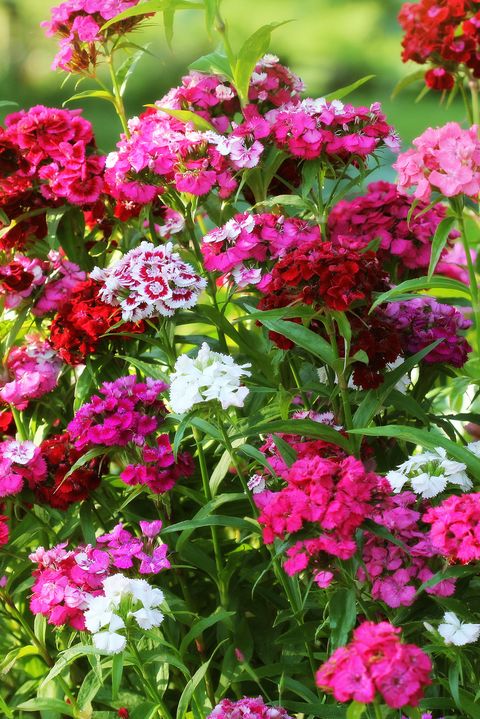
The genus name comes from the the Greek words dios, meaning divine, and anthos, meaning flower. Extremely fitting, no? Cut them for long-lasting bouquets and continued blooming.
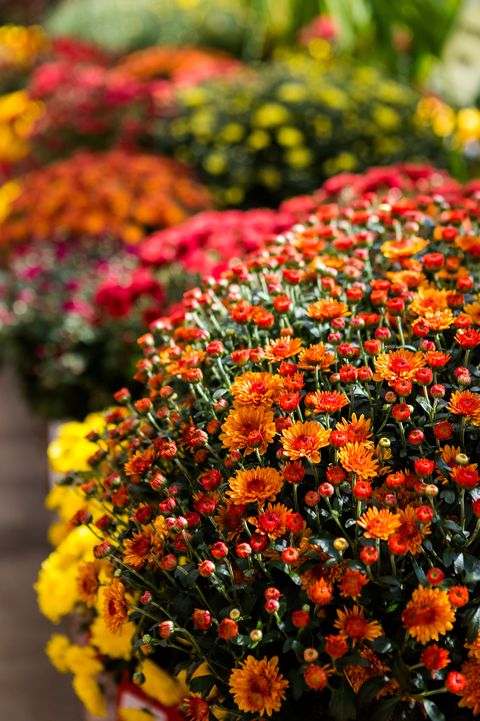
The quintessential fall flower, you can pick up mums for (practically) a dime a dozen at the grocery store. Set the pots in bright, indirect light and water consistently throughout autumn. To keep ’em blooming (and looking neat), cut off buds as they wilt.
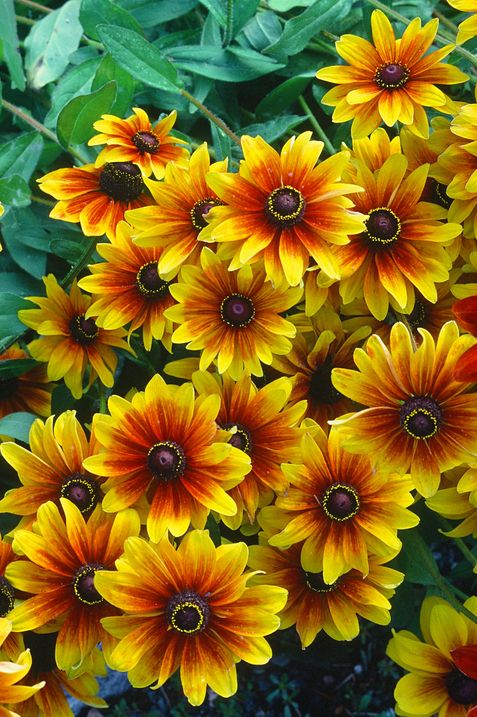
These sunflower-like beauties will love the brightest spot in your garden. Sow the seeds directly in the soil at any point in the summer to get some splashy autumn blooms.
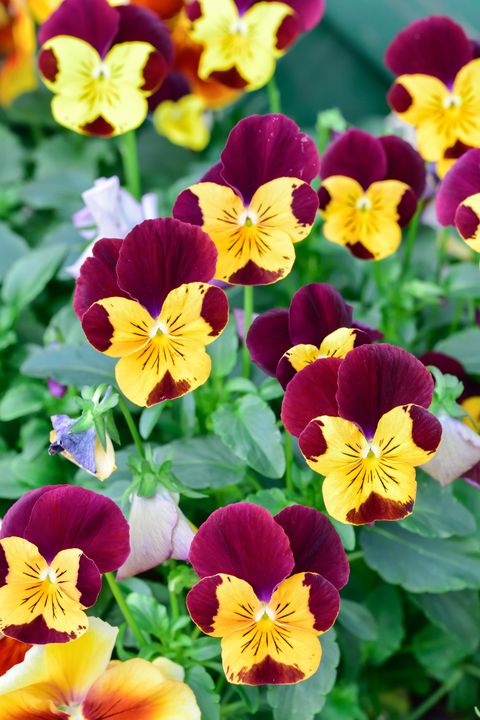
Pansies can’t tolerate heat, but they can withstand the winter. Plant ’em at the end of summer and they’ll bloom until a hard frost. Then expect to see their smiling faces pop up again in the spring.
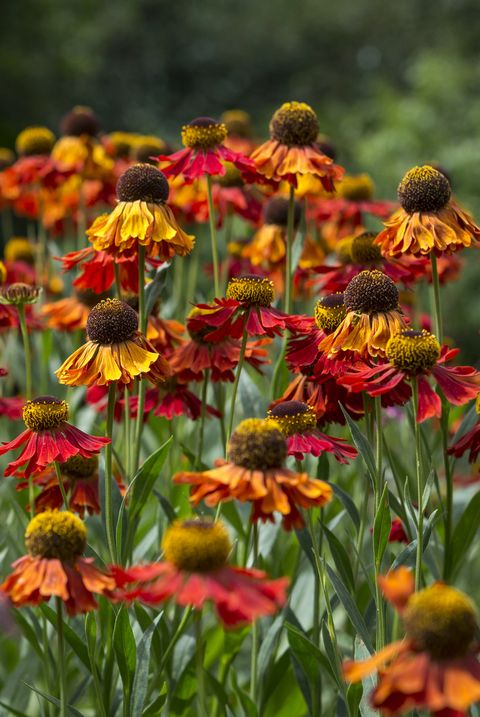
They don’t just look pretty. Helenium also repels deer and stops rabbits from munching on other flowers in your bed.
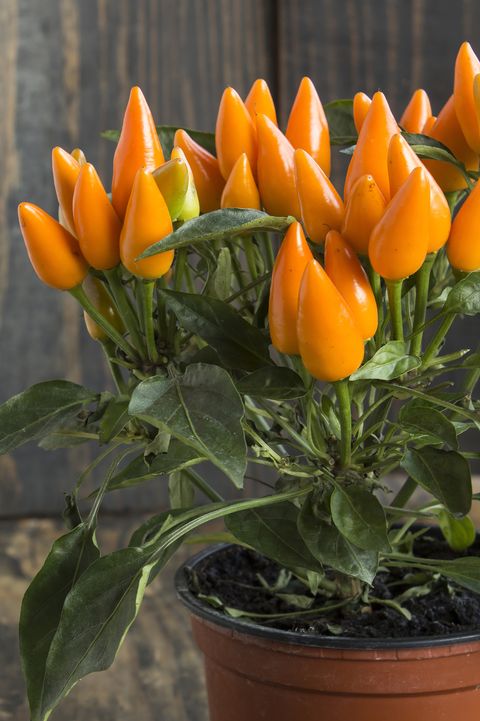
Fair warning that you shouldn’t try to eat these, as they’re especially spicy. Stick the pot in your sunniest window for the best “crop,” and water evenly once the soil gets slightly dry.
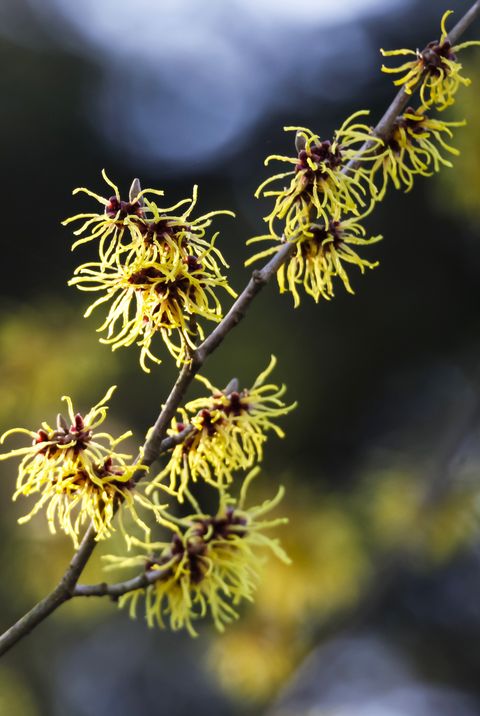
Yes, you get attractive dark-green foliage in the summer, but autumn and winter are when this popular shrub really shines. Spidery witch hazel flowers will often bloom way past the time other trees and bushes drop their leaves.
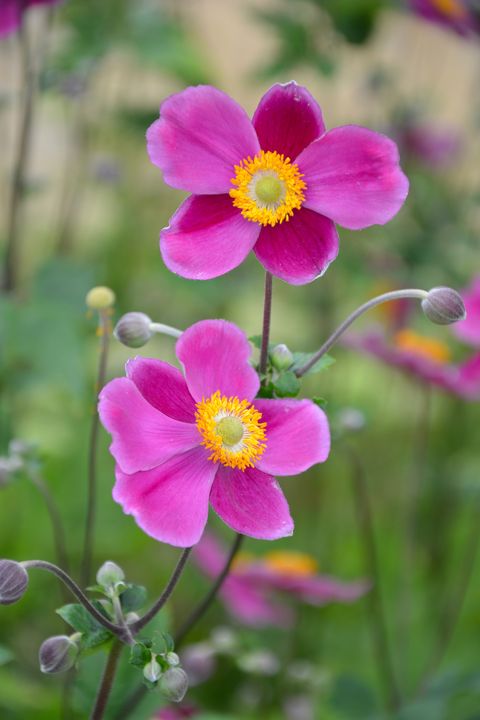
Autumn reds and oranges look great and all, but you won’t mind seeing a splash of pink through your window this September. Bonus for shady yards: The versatile border plants thrive in part sun.
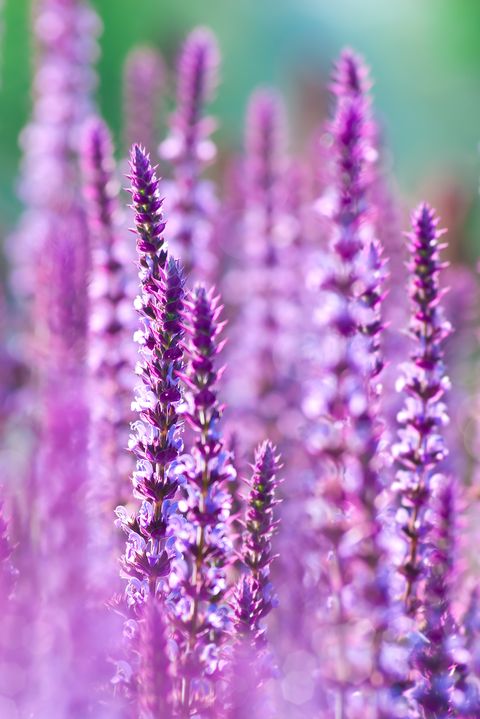
Beginner gardeners take note of these sturdy (and aromatic!) stems. The flowering spikes also come with gorgeous silvery foliage to boot.

Watch this succulent plant sprout up in the summer before bursting into a deep pink or red in the fall. Since sedum (also called stonecrop) stores water in its leaves, it’s incredibly heat- and drought-resistant, and butterflies love the wide, dense flowers.
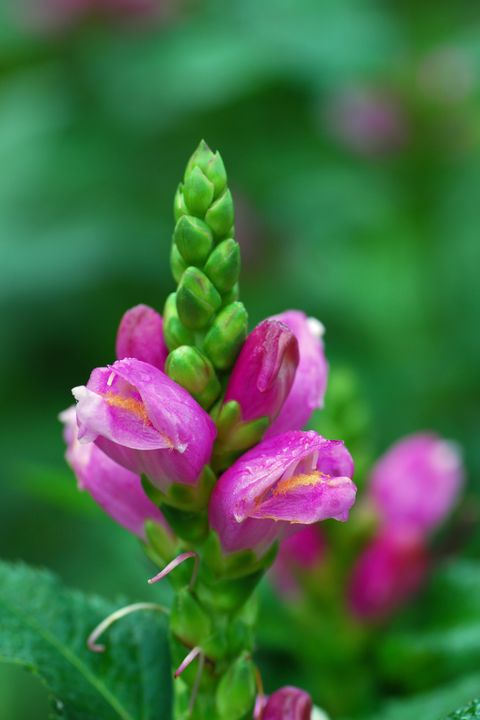
You’ll know it’s time to go back to school once these tubular blossoms appear. The plant also goes by the name “chelone,” but take one look at the flowers and you’ll understand the nickname.
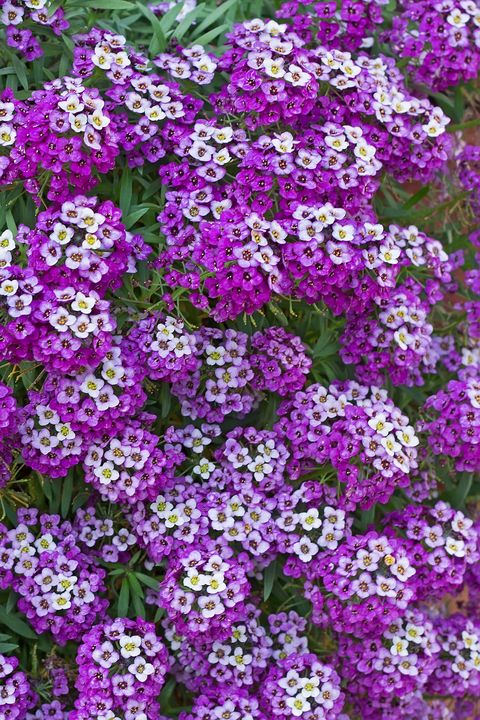
Available in both purple and white, alyssum works in both containers and beds, or as a ground cover. If you’re aiming for a fantasy garden, plant some between stepping stones for a magical effect.
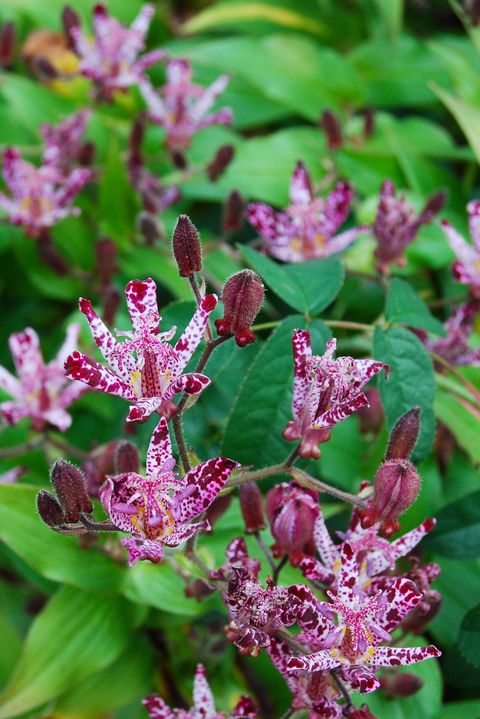
Like toads, these orchid-like flowers love shady, moist locations — but rest assured they’re a lot prettier than their namesake. Tricyrtis does well with other woodland plants like hostas and ferns, according to the Chicago Botanic Garden — but watch out for deer. They’ll like these blossoms as much as you do.
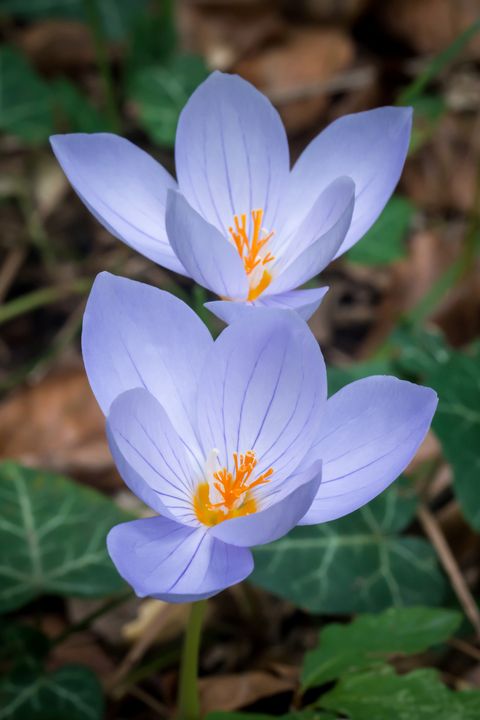
You might know colchicum by its other name: autumn crocus. As you would expect, they do bloom between August and September, but without any foliage. The leaves only appear in the spring before dying back.
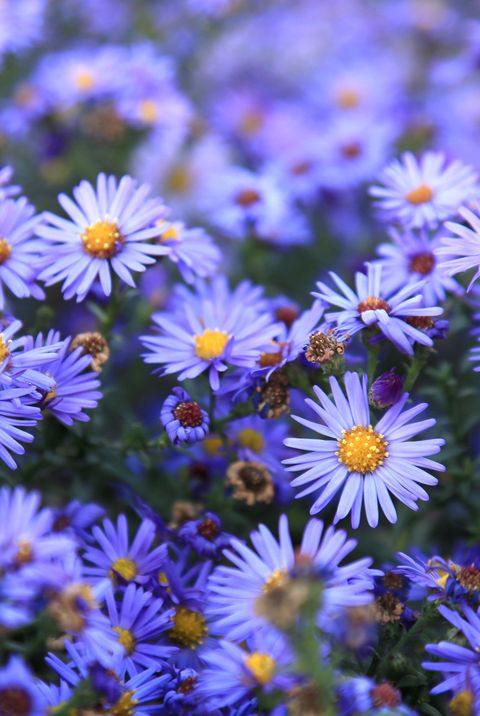
Let your flower garden go out with a bang with this show-stopping display. For the biggest swath of lavender blooms, plant in full sun. The daisy-like blossoms also repel deer and attract butterflies.
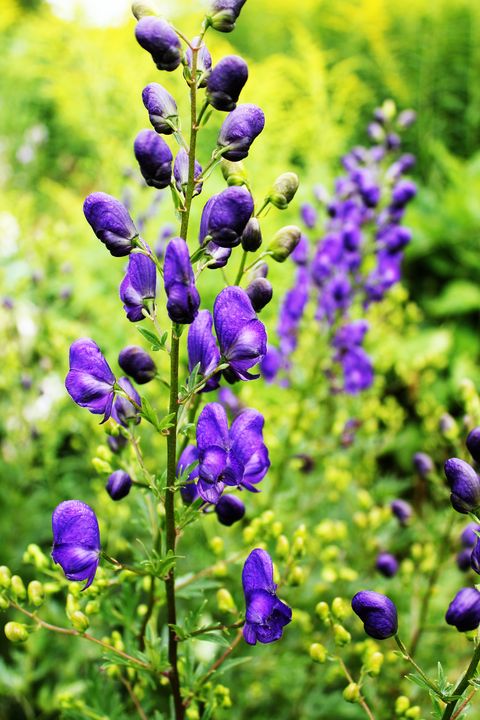
Caution: This plant is poisonous, but with purple flowers this lovely it’s hard to resist. Plant the perennial (also called wolfsbane) in shaded areas — and make sure you wash your hands after handling it. If you have curious kids or pets, you might want to skip this one.






































